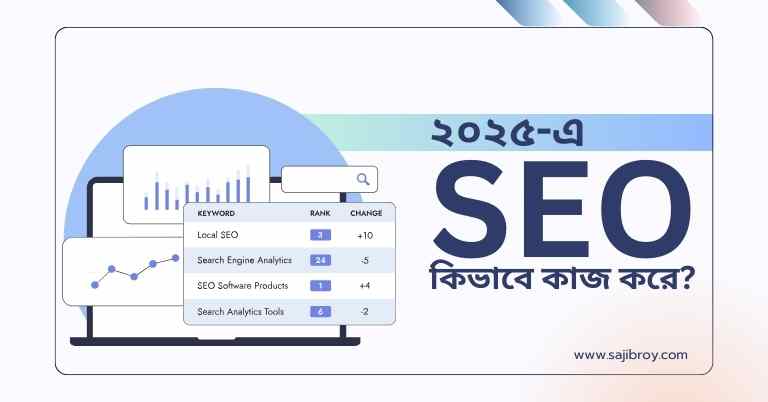To optimize content for SEO, focus on keyword research, optimizing meta tags, improving site speed, and creating high-quality, original content. By implementing these strategies, you can improve your website’s visibility and rankings on search engine results pages (SERPs).
With careful attention to these factors, you can enhance your chances of attracting organic traffic and reaching your target audience effectively. This optimized content or content marketing will not only improve your search engine rankings but also provide valuable information to your audience, demonstrating your expertise and increasing engagement.
By following best SEO practices, you can ensure that your content is both user-friendly and search engine-friendly.

Let's See the Topic Overview
Understand The Role Of Keywords In SEO Ranking
Keywords play a crucial role in optimizing content for SEO ranking. By strategically incorporating relevant keywords into your content, you can increase its visibility and improve its chances of appearing higher in search engine results pages (SERPs). In this section, we will explore the importance of keyword research, selecting the right keywords for your content, and utilizing long-tail keywords effectively.
Importance Of Keyword Research
Effective keyword research is the foundation of any successful SEO strategy. By understanding what keywords your target audience is using to search for information, products, or services related to your content, you can tailor your content to meet their needs.
Here are key points to consider when conducting keyword research:
- Start by brainstorming relevant topics and terms related to your content.
- Use keyword research tools like Google Keyword Planner, Ahrefs, or Semrush to identify popular keywords and their search volumes.
- Focus on long-tail keywords that are more specific and have lower competition.
- Analyze your competitors’ keyword strategies to identify gaps and opportunities.
- Consider user intent and search trends when selecting keywords.
Selecting The Right Keywords For Your Content
Once you have conducted keyword research, selecting the right keywords is paramount to optimizing your content for SEO. Here are some key points to keep in mind:
- Choose keywords that align with your content’s topic, purpose, and target audience.
- Prioritize keywords with high search volumes and low competition.
- Incorporate primary keywords in your page title, meta description, headings, and throughout the content naturally.
- Use variations, synonyms, and related terms of your main keyword to provide context and avoid keyword stuffing.
- Aim for a keyword density of around 1-2% to ensure your content remains readable and natural.
Utilizing Long-Tail Keywords Effectively
Long-tail keywords are longer, more specific keyword phrases that usually have lower search volumes. While they may have less search traffic individually, they can collectively drive a significant amount of targeted traffic to your website. Here’s how you can utilize long-tail keywords effectively:
- Include long-tail keywords in your content naturally and strategically.
- Long-tail keywords often reflect specific user intent, so tailor your content to provide the most relevant and valuable information.
- Use long-tail keywords in your blog post titles, subheadings, and throughout your content to enhance its SEO impact.
- Focus on addressing niche topics and answering specific user queries to attract highly targeted traffic.
- Monitor and analyze the performance of your long-tail keywords using tools like Google Analytics to make data-driven optimizations.
By understanding the role of keywords in SEO ranking and implementing effective keyword research, selection, and utilization strategies, you can optimize your content to attract more organic traffic and improve your search engine rankings. Take the time to research and choose the right keywords for your content, and you’ll increase the visibility and relevance of your website in the online landscape.
Create High-Quality, Search-Inspired Content
Writing Engaging And Relevant Content
Creating high-quality and search-inspired content is crucial when it comes to optimizing your content for SEO. By crafting compelling content that resonates with your audience and aligns with search intent, you can enhance your chances of ranking higher in search engine results.
Here are some key points to consider:
- Understand your audience: Before you start writing, take the time to research and understand your target audience. What are their interests, pain points, and needs? By knowing your audience, you can create content that speaks directly to them and addresses their concerns.
- Conduct keyword research: Keywords play a vital role in optimizing your content for SEO. Use keyword research tools to identify relevant keywords and phrases that are frequently searched for by your target audience. Incorporate these keywords naturally throughout your content to improve its visibility to search engines.
- Provide value: Your content should provide valuable and informative insights to the reader. Avoid fluff and focus on delivering actionable information that answers their questions or solves their problems. By providing value, you not only engage your audience but also increase the chances of others linking to your content.
- Structure your content: Break your content into easily readable sections using headings and subheadings. This helps both search engines and readers navigate through your content. Incorporate relevant h2 and h3 headings that mirror the search intent and include your target keywords.
- Use visual elements: Including visually appealing elements such as images, infographics, and videos can enhance the user experience and make your content more engaging. Additionally, search engines consider multimedia elements as positive signals for content quality.
Incorporating Keywords Naturally Into Your Content
Keywords are the backbone of SEO, but it’s crucial to use them naturally and avoid keyword stuffing. Here’s how you can incorporate keywords seamlessly:
- Include keywords in your title and meta description: The title and meta description are prime real estate for keywords. Craft a compelling title that grabs attention and includes your primary keyword. Write a concise and engaging meta description that includes relevant keywords, enticing users to click through to your content.
- Integrate keywords in your headings: Use your target keywords in h2 and h3 headings to optimize your content structure. This not only helps search engines understand the context of your content but also improves user readability.
- Sprinkle keywords throughout your content: Incorporate keywords naturally throughout your content, ensuring they flow seamlessly within the context of your writing. Avoid stuffing keywords and focus on creating valuable content that satisfies user intent.
- Use variations and related terms: Instead of using the same keyword repeatedly, utilize variations and related terms to provide a broader context to your content. This helps search engines understand the overall topic and provides a more comprehensive user experience.
Importance Of Originality And Uniqueness In Content Creation
Creating original and unique content is paramount to a successful SEO strategy. Here’s why it’s essential:
- Avoid duplicate content: Search engines penalize websites that have duplicate content as it provides little value to users. Ensure that each piece of content you create is original, avoiding copying or duplicating content from other sources.
- Stand out from the competition: In a sea of content, uniqueness sets you apart. By offering fresh and original perspectives, you increase your chances of attracting readers and earning backlinks from other authoritative websites.
- Build expertise and authority: By consistently creating original content, you demonstrate your knowledge and expertise in your niche. This builds trust with both your audience and search engines, leading to higher rankings and increased organic traffic.
- Encourage social sharing and engagement: Unique and valuable content is more likely to be shared on social media platforms, increasing its reach and potential for natural backlinks. Social signals play a role in SEO, and original content tends to generate higher engagement.
Creating high-quality, search-inspired content is the foundation of successful SEO. By understanding your audience, incorporating keywords naturally, and focusing on originality, you can optimize your content for better visibility in search engine results and provide value to your readers. Remember, the key to SEO-friendly content is balancing optimization with user experience and value creation.
Enhance On-Page SEO Elements
When it comes to optimizing your content for SEO, it’s crucial to pay attention to on-page SEO elements. These elements can greatly impact your website’s visibility and ranking on search engine result pages. Let’s delve into three key areas you should focus on to enhance your on-page SEO.
Optimizing Page Titles And Meta Descriptions
Page titles and meta descriptions play a significant role in attracting search engine users to click on your website. By optimizing these elements, you can improve your click-through rate and ultimately increase organic traffic. Here are some key points to consider:
- Craft compelling and concise page titles that include relevant keywords
- Stay within the recommended character limits (around 50-60 characters for titles and 150-160 characters for meta descriptions)
- Ensure each page title and meta description accurately reflect the content on the page
- Use action-oriented language to entice users to click
Utilizing Header Tags To Structure Content
Header tags, such as h1, h2, and h3, are essential for organizing your content and signaling its relevance to search engines. Here’s how you can make the most of header tags:
- Use a single h1 tag for the main title of your page or post
- Utilize h2 tags for subheadings that divide your content into sections
- Implement h3 tags for further subheadings within each section
- Incorporate relevant keywords naturally into your headings to improve SEO
- Ensure the hierarchy of your header tags makes logical sense and aids in content readability
Integrating Internal And External Links For Better SEO
Internal and external links are integral for improving SEO and providing a seamless user experience. Here’s how to effectively incorporate them:
- Include internal links to relevant pages within your website to enhance navigation
- Use descriptive anchor text that accurately describes the linked content
- Ensure that all internal links are functional and lead to the intended pages
- Integrate external links to reputable and authoritative sources that support your content
- Encourage other websites to link back to your content by creating valuable and shareable resources
By optimizing these on-page SEO elements – page titles and meta descriptions, header tags, and internal and external links – you can improve your website’s visibility, drive organic traffic, and enhance the overall user experience. Implement these strategies to boost your search engine rankings and surpass your competitors.
Improve Website Loading Speed And Mobile Optimization
Optimizing Images And Multimedia For Faster Loading Time
In today’s digital age, website loading speed has become a crucial factor in both user experience and search engine optimization. Slow-loading websites not only frustrate users but also result in a higher bounce rate, leading to lower rankings on search engine result pages.
Fortunately, there are several techniques you can employ to optimize your website’s loading speed, particularly when it comes to images and multimedia content.
Here are some key points to consider for optimizing images and multimedia:
- Compress images: Large image files can significantly slow down your website. Reduce the file size of your images by compressing them without compromising on quality. You can use online tools or plugins to compress images before uploading them to your website.
- Optimize image formats: Different image file formats have varying degrees of compression capabilities. Use formats such as jpeg or png, depending on the nature of the image. Jpeg files are more suitable for photographs, while png files work well for images with transparency.
- Resize images: Prioritize resizing images to their display dimensions on your website. Uploading oversized images and then scaling them down using html or css can slow down your website unnecessarily.
- Lazy loading: Implement lazy loading for images and multimedia content. This technique loads images only when they come into the viewport, conserving bandwidth and decreasing loading times. There are many plugins available that assist with lazy loading implementation.
- Optimize multimedia: Similar to images, optimize multimedia files such as videos and audio to reduce their size without compromising quality. Consider using formats that allow for better compression, such as html5 over Flash, and ensure that your multimedia content is properly encoded.
Making Use Of Caching And Compression Techniques
Caching and compression techniques are essential for improving website loading speed as well as optimizing SEO. By implementing these techniques, you can reduce server response time, minimize file sizes, and provide a smoother experience for your website visitors. Here’s what you need to know:
- Browser caching: Configure browser caching to instruct visitors’ web browsers to store static resources locally. This allows returning visitors to load your website faster as the cached files are retrieved from their local devices instead of the server.
- Server-side caching: Utilize server-side caching mechanisms, such as content delivery networks (CDN) or caching plugins, to store processed pages and deliver them quickly to users. This reduces the load on your server and improves the overall website performance.
- Gzip compression: Enable gzip compression on your server to reduce the size of textual content before transferring it to users’ browsers. Gzip can significantly reduce file sizes, resulting in faster loading times.
- Minification: Minify your html, css, and javascript files by removing unnecessary characters, such as white spaces and comments. This reduces file sizes and improves loading speed.
Implementing Responsive Design For Better Mobile Experience
In today’s mobile-driven world, optimizing your website for mobile devices is a necessity. Search engines prioritize mobile-friendly websites, and users expect a seamless experience across various devices. To provide an excellent mobile experience, consider these key points:
- Responsive design: Implement a responsive design that adapts to different screen sizes and resolutions automatically. This ensures that your website will look and function well on any device.
- Mobile-friendly navigation: Simplify your website’s navigation for mobile users. Incorporate a mobile menu and ensure that links and buttons are easily tapable with a finger.
- Optimize content for mobile: Keep your content concise, easily scannable, and readable on smaller screens. Break long paragraphs into sections, use bullet points, and prioritize important information.
- Page speed optimization: Optimize your website’s loading speed for mobile devices. Consider minimizing mobile-specific elements, using smaller image files, and prioritizing above-the-fold content.
By following these techniques for improving website loading speed and mobile optimization, you can enhance user experience, increase search engine visibility, and ultimately drive more organic traffic to your website. Remember that the key to successful optimization is continuously monitoring and refining your strategies to adapt to evolving user expectations and search engine algorithms.
Leverage Social Media For SEO
Utilizing Social Media Platforms To Promote Your Content
In today’s digital age, utilizing social media platforms is a powerful strategy to promote your content and boost your SEO efforts. Social media platforms, such as Facebook, Twitter, Instagram, and LinkedIn, provide an excellent opportunity to reach a wide audience and increase the visibility of your content.
Here are some key ways to leverage social media for SEO success:
- Create engaging and shareable content: Develop high-quality content that resonates with your target audience. Craft compelling headlines, include eye-catching visuals, and offer valuable insights and information. When sharing your content on social media, make sure it is easily readable and visually appealing, encouraging users to click and engage.
- Optimize your social media profiles: Ensure your social media profiles are fully optimized for search engines. Use relevant keywords in your bio, descriptions, and tags. This will help your profiles rank higher in search results, increasing your chances of being discovered by users searching for relevant topics.
- Encourage social media sharing: Make it easy for your audience to share your content on social media platforms. Add social sharing buttons to your website and blog posts, allowing users to easily share your content with their networks. By encouraging social media sharing, you can increase the visibility and reach of your content, ultimately driving more organic traffic to your site.
- Engage with your audience: Social media is not just about sharing content; it’s also about building relationships with your audience. Respond to comments, answer questions, and engage in conversations related to your niche. By actively participating in social media discussions, you can build a strong community around your brand and establish yourself as an authority in your industry.
- Stay consistent and active: Consistency is key when it comes to social media. Develop a posting schedule and stick to it. Regularly share new content, industry news, and updates to keep your audience engaged and interested. Being active on social media signals to search engines that your brand is reputable and trustworthy, potentially improving your SEO rankings.
Building A Strong Social Media Presence For Improved SEO
In addition to promoting your content, building a strong social media presence directly impacts your SEO efforts. Here are a few ways you can strengthen your social media presence to improve your SEO:
- Optimize your profiles: As mentioned earlier, optimizing your social media profiles is crucial for SEO. Use relevant keywords in your bio, tags, and descriptions to help search engines understand what your brand is all about. Including links to your website and blog in your profiles can also drive traffic and improve your site’s authority.
- Focus on engagement and interactions: Social media platforms prioritize content that generates high engagement levels. Encourage your audience to like, share, and comment on your posts. Engage with your followers by responding to their comments and messages promptly. Higher engagement levels send positive signals to search engines and can improve your overall SEO rankings.
- Leverage social signals: Search engines analyze social signals such as likes, shares, and comments to assess the popularity and relevance of content. The more social signals your content receives, the higher it is likely to rank in search results. To boost social signals, create shareable content, actively engage with your audience, and build relationships with influencers in your industry.
- Build quality backlinks: Social media platforms can serve as a valuable source of backlinks to your website. When influencers, industry leaders, or reputable websites share your content on social media, it increases the chances of others linking to it. The more high-quality backlinks your content receives from social media, the more authority it gains in the eyes of search engines.
- Monitor and analyze performance: Utilize social media analytics tools to track the performance of your social media efforts. Monitor engagement metrics, audience demographics, and referral traffic to identify areas for improvement and refine your strategy. By continuously analyzing your social media performance, you can optimize your efforts for better SEO results.
Leveraging social media platforms is a vital aspect of optimizing content for SEO. By utilizing these platforms to promote your content, encourage social media sharing, and building a strong social media presence, you can improve your website’s visibility, drive organic traffic, and enhance your overall SEO rankings.
So, harness the power of social media and unlock the potential to reach a wider audience and achieve SEO success.
Build High-Quality Backlinks
Importance Of Backlinks In SEO Ranking
Backlinks are an integral part of search engine optimization (SEO), as they play a significant role in determining the ranking of a webpage in search engine results pages (SERPs). Search engines like Google consider backlinks as a vote of confidence from other websites, indicating that the linked content is valuable and trustworthy.
Here are some key points to understand the importance of backlinks in SEO ranking:
- Backlinks act as a signal of authority: When reputable websites link to your content, search engines perceive it as a vote of confidence. These backlinks indicate to search engines that your content is relevant, reliable, and authoritative, which can positively impact your search rankings.
- Improved visibility and organic traffic: Backlinks from authoritative websites can help increase your online visibility. When users come across these links while browsing other websites, they can click through to your content, driving organic traffic to your site.
- Enhanced crawling and indexing: Search engines use crawling bots to discover and index web pages. Backlinks can act as bridges, guiding these bots from one website to another. When search engines find new backlinks pointing to your content, they are more likely to crawl and index it faster.
- Referral traffic and brand exposure: Backlinks not only contribute to your SEO efforts but also have the potential to bring in referral traffic. When someone clicks on a backlink leading to your website, they are directed to your site, exposing them to your brand and potentially converting them into customers.
Identifying Authoritative Websites For Link Building
To build high-quality backlinks, you need to identify authoritative websites relevant to your niche. Here are some key points to consider when finding such websites:
- Relevant and niche-specific websites: Look for websites that are related to your industry or niche. Backlinks from relevant websites hold more value and are more likely to boost your SEO rankings.
- High domain authority (da): Domain authority is a metric developed by Moz that predicts the ranking potential of a website on search engine result pages. Look for websites with a high DA score, as their backlink can carry more SEO weight.
- Reputable and trusted sources: Identify websites that are recognized as reliable and trustworthy sources within your industry. These websites are likely to have a positive impact on your SEO ranking when they link to your content.
- Competitor analysis: Analyzing your competitors’ backlink profiles can provide insights into authoritative websites that you might not have considered. Tools like Ahrefs or Moz can help you identify your competitors’ backlinks and target similar websites.
- Social media influencers and bloggers: Collaborating with influencers or bloggers in your industry can be an effective way to gain backlinks and reach a broader audience. Find influencers who have a strong online presence and engage with your target audience.
Strategies For Natural And Organic Link Building
Link building should be approached with the aim of acquiring natural and organic backlinks. Here are some strategies to consider:
- Create high-quality and unique content: Producing valuable and informative content that is unique to your niche will naturally attract backlinks from other websites. Engaging content that provides value to the readers is more likely to be shared and linked to by other authoritative sources.
- Guest blogging: Guest blogging involves writing and publishing content on other authoritative websites as a guest author. This strategy allows you to showcase your expertise, gain exposure to a different audience, and earn backlinks in return.
- Outreach and relationship-building: Reach out to other website owners, bloggers, or influencers in your industry to establish connections. Building strong relationships can lead to opportunities for guest posting, collaborations, and natural backlinks.
- Content promotion and distribution: Share your content through social media platforms, email newsletters, or industry-specific forums. By increasing the visibility of your content, you improve the chances of others discovering and linking to it.
- Online directory listings: Submitting your website to relevant online directories can help generate backlinks and increase your website’s visibility. However, ensure that you choose reputable directories to maintain the quality of your backlink profile.
Remember, when implementing these strategies, focus on creating valuable and engaging content that naturally attracts backlinks. Employing unethical practices like buying backlinks or participating in link schemes can negatively impact your SEO efforts in the long run. Prioritize quality over quantity when it comes to building high-quality backlinks.
Analyze And Measure SEO Success
Utilizing Analytics Tools To Track Your SEO Performance
Analyzing and measuring SEO success is crucial for optimizing your content and improving your rankings on search engine results pages. By utilizing analytics tools, you can gather valuable data and insights to make informed decisions for continuous optimization. Here are some key points to consider:
- Identify the right analytics tools: Choose the appropriate analytics tools that provide comprehensive data and reports on your website’s performance, such as google analytics, Semrush, or Moz.
- Set up tracking: Implement the tracking code provided by the analytics tool on your website to start collecting data. This allows you to monitor various metrics and important SEO indicators.
- Monitor keyword rankings: Keep track of how your targeted keywords are performing in search engine rankings. This will help you identify opportunities for improvement and optimize your content accordingly.
- Analyze organic traffic: Regularly monitor your organic traffic to see how your SEO efforts are driving visitors to your website. Look for trends, patterns, and areas of improvement.
- Dive deep into data: Use the analytics tool to analyze various metrics like bounce rate, average session duration, and conversion rates. This information can help you understand user behavior and make data-driven decisions.
- Track backlinks: Keep an eye on the number and quality of backlinks pointing to your website. This data can help you assess the effectiveness of your link-building strategies and identify any potential issues.
- Measure on-page engagement: Analyze metrics like time on page, page views, and exit rates to assess how engaging your content is to users. Make improvements to keep visitors on your site longer.
- Stay up-to-date with algorithm changes: Regularly check for updates or changes in search engine algorithms that may impact your SEO efforts. Stay educated and adapt your strategies accordingly.
- Set goals and benchmarks: Develop specific and measurable goals for your SEO performance. Regularly monitor your progress and compare it to benchmarks to ensure you’re on the right track.
- Continuously optimize based on data: Regularly review and analyze the data provided by your analytics tool to make informed decisions for optimizing your content and improving your SEO performance.
Remember, tracking and analyzing SEO performance is an ongoing process. By using analytics tools and making data-driven decisions, you can refine your SEO strategies and improve your content’s visibility and organic traffic.
Stay Updated With SEO Best Practices And Trends
SEO is a constantly evolving field, with search engines like Google regularly updating their algorithms and best practices. To stay ahead of the game and ensure your content is optimized for SEO, it is crucial to remain updated with the latest trends and industry insights.
In this section, we’ll explore some effective ways to stay informed and adapt your strategies accordingly.
Following Industry Experts And Staying Updated With Algorithm Changes:
- Stay connected with renowned SEO experts on social media platforms like Twitter and LinkedIn. Their insights and analysis can provide valuable information about emerging trends and algorithm updates.
- Subscribe to industry-leading blogs and websites that regularly publish content on SEO, such as Moz, search engine land, and Google Webmaster Central blog. These platforms often provide in-depth articles, case studies, and guides to help you optimize your content effectively.
- Attend webinars or online conferences hosted by SEO professionals, where they discuss new developments and share practical tips. These events offer a great opportunity to learn from experts and network with like-minded individuals in the SEO community.
Participating In SEO Communities And Forums For Knowledge Sharing:
- Join online forums and communities like Reddit’s SEO subreddit, moz community, or Warrior forum. These platforms are a treasure trove of information, with professionals sharing their experiences, techniques, and strategies.
- Engage in discussions, ask questions, and contribute your own insights to the community. By actively participating, you can gain valuable knowledge, keep up with industry conversations, and stay updated with the latest SEO trends.
Adapting Strategies To Current SEO Trends And Best Practices:
- Regularly monitor and analyze your website’s performance using tools like Google Analytics and Google Search Console. These platforms provide valuable data and insights to identify areas for improvement.
- Stay abreast of the latest SEO techniques and best practices by regularly reading industry blogs and attending webinars. Implement these strategies, such as optimizing for mobile, improving page load speed, and focusing on user experience, to effectively optimize your content.
- Experiment with different SEO tactics and keep a close eye on the results. Adjust your strategies accordingly based on the data and analytics, ensuring that you are aligning your efforts with the latest trends and best practices.
By staying updated with SEO best practices and trends and adapting your strategies accordingly, you can maintain your website’s visibility, attract organic traffic, and ultimately improve your search engine rankings. Remember, the key lies in continuously learning, experimenting, and evolving with the ever-changing SEO landscape.
So, stay informed, engage with the SEO community, and always be ready to adapt to the latest industry developments.
Conclusion
To optimize content for SEO, it is crucial to keep up with the ever-changing digital landscape. By conducting keyword research and strategically incorporating relevant keywords throughout your content, you can greatly improve your website’s visibility on search engine results pages.
Additionally, focusing on creating high-quality, engaging content that provides value to your audience will not only help improve your SEO rankings but also drive organic traffic to your website. It is important to regularly update and optimize your content by including internal and external links, formatting it properly, and using descriptive and engaging headings.
Furthermore, optimizing the meta tags and descriptions can enhance your click-through rate and ultimately boost your organic traffic. By following these SEO best practices, you can increase your chances of ranking higher in search engine results and reaching a wider audience.
Remember, SEO optimization is an ongoing process that requires continual monitoring and tweaking to stay ahead of the competition. So, start implementing these strategies and watch your website flourish in the digital realm.












